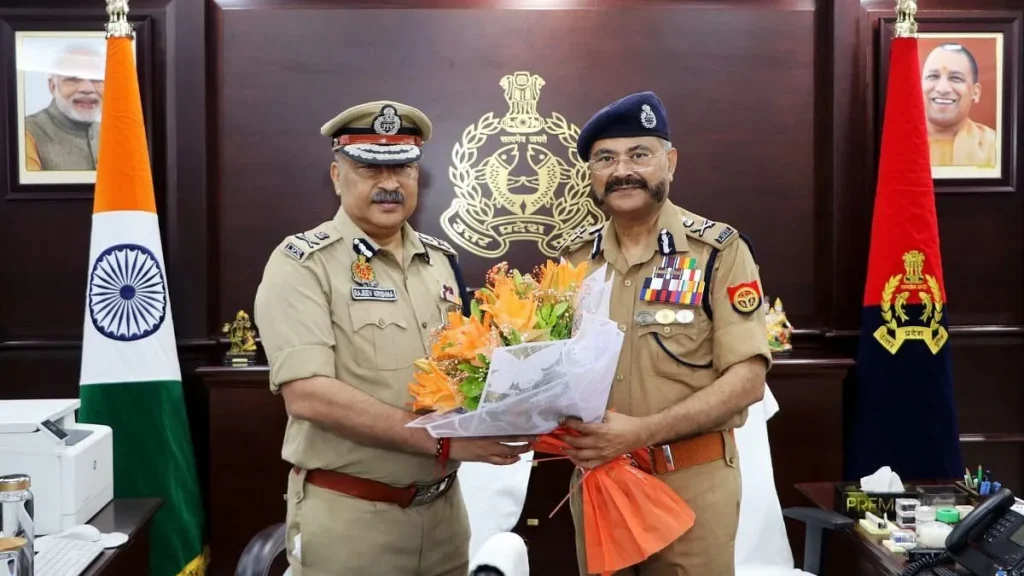Syllabus:
GS3: Various Security Forces and Agencies and their Mandate.
Context:
Despite the Supreme Court’s directive to gradually reduce IPS deputations in CAPFs, the Home Ministry continues appointing them to senior roles.
More on the News
- Since the Supreme Court’s May 23, 2025, ruling granting CAPF officers Organised Service status, the Home Ministry has appointed at least eight IPS officers to senior CAPF posts.
- Currently, 20% of Deputy Inspector General (DIG) and 50% of Inspector General (IG) posts in CAPFs are reserved for IPS officers.
- These quotas have long been criticized for creating bottlenecks in the promotion pipeline for CAPF officers.
Central Armed Police Forces (CAPFs)
The Central Armed Police Forces (CAPFs) function under the administrative control of the Ministry of Home Affairs, New Delhi.
The CAPFs are headed by DGP rank officers.
The CAPFs include various forces such as:
- The Assam Rifles (AR)
- Border Security Force (BSF)
- Central Industrial Security Force (CISF)
- Central Reserve Police Force (CRPF)
- Indo Tibetan Border Police (ITBP)
- National Security Guard (NSG)
- Sashastra Seema Bal (SSB)
Currently, as per the Recruitment Rules (RRs) of various CAPFs, 20-25% of the posts at DIG level, 50% at IG level and 75% at ADG level are manned by IPS officers.
The remaining posts are manned by Executive-Cadre, General Duty, directly recruited CAPF officers (DRs) or officers promoted from the ranks.
The DRs are recruited as Group-A officers through a combined examination and allocated to 05 different CAPFs.
Evolution of CAPF Officers’ Recognition as Organized Group A Services (OGAS):
Sixth Central Pay Commission (2008): A Push for Reforms: The Sixth Central Pay Commission (2006-08) went beyond pay revisions, advocating for institutional reforms. Key recommendations included:
- Introducing Non-Functional Financial Upgradation (NFFU) to mitigate stagnation among Group A officers.
- Granting Organized Group A Services (OGAS) status to Central Armed Police Forces (CAPFs) to ensure parity with other civil services.
Delayed Implementation & Legal Battles: Despite these recommendations, successive governments failed to fully implement the reforms, depriving CAPF officers of structural benefits available to other services.
This exclusion led to multiple legal challenges, culminating in the landmark Harananda judgment (2019), where the Supreme Court recognized CAPFs as OGAS but only for NFFU benefits, leaving broader cadre policies unresolved.
Sanjay Prakash Judgment (2025): The delayed ambiguity was finally resolved in Sanjay Prakash & Ors. vs Union of India & Ors. (May 2025), where the Supreme Court unequivocally recognized CAPF officers as part of OGAS, affirming their entitlement to all associated service benefits.
The court issued categorical directions:
- Cadre Reviews for all CAPFs must be completed within six months.
- Recruitment Rules must be reviewed by the Ministry of Home Affairs, in consultation with cadre representatives, within the same timeframe.
- Deputation Posts in CAPFs up to the Senior Administrative Grade (SAG) level are to be progressively reduced over two years to promote internal promotion.
- The Department of Personnel and Training is directed to take appropriate action within three months of receiving reports.
Implications of the Judgment
- Career Mobility: Recognition as OGAS unlocks pathways for fair promotions, addressing long-standing stagnation.
- Policy Reforms: Mandated cadre reviews may usher in a rationalized, equitable framework that reflects the operational demands and sacrifices of CAPF officers.
- Morale Boost: Approximately 18,000 officers, many deployed in hostile zones, now gain institutional acknowledgment and dignity.
- Administrative Justice: The Court’s intervention reaffirms the constitutional promise of equality under Articles 14 and 16 for uniformed personnel.

